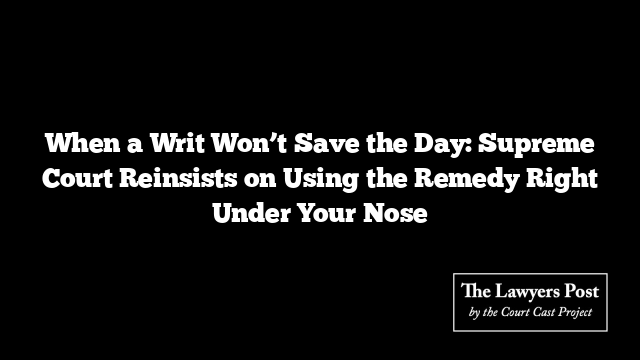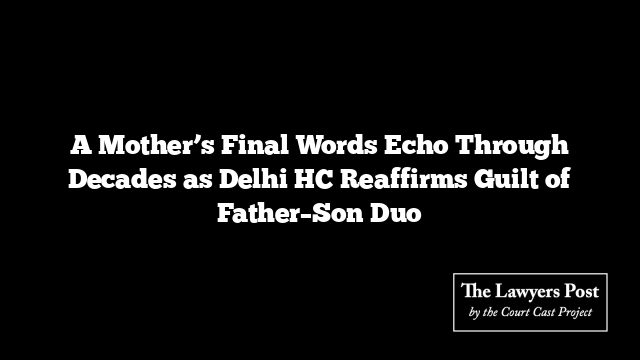In a reminder wrapped in judicial firmness, the Supreme Court has reiterated a simple rule that many litigants conveniently forget: if the law gives you a remedy, use it—don’t expect a pending writ petition to act as a magic pause button.
A Bench led by Justices Satish Chandra Sharma and Vipul M. Pancholi shut down an appeal filed by a litigant who chose to bypass the Tamil Nadu Revenue Recovery Act, 1864 and head straight to the High Court to contest the auction of her property. Instead of invoking the statute’s built-in mechanism, she relied on an interim order in a parallel writ proceeding, believing it protected the entire auction process.
The Court didn’t mince words. It held that the litigant’s refusal to use the Act’s time-bound avenues—particularly the 30-day window under Sections 37-A and 38—could not be excused simply because a writ petition happened to be pending somewhere else. And the interim order she relied on? It only paused the confirmation of the sale, not the auction itself.
In fact, the Bench underscored that the auction went ahead lawfully because there was no judicial restraint stopping it. The appellant’s assumption that everything stood frozen was described as “misconceived”—a misunderstanding that ultimately cost her the case.
Reaffirming principles laid out in an earlier precedent, the Court noted that interim protection cannot be used to derail statutory procedures or allow litigants to sidestep mandatory routes. If the law gives you a ladder, the Court will not let you pretend the stairs don’t exist.
With that, the appeal was dismissed, and the original statutory roadmap—long ignored by the appellant—stood vindicated.




